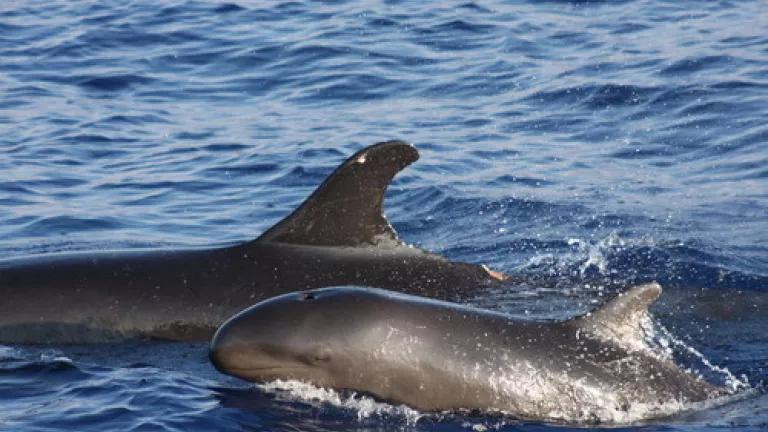
Over the last year, my colleagues and I have written repeatedly about the plight of Hawaii’s coastal false killer whales, which have declined to about 150 animals. NRDC petitioned the National Marine Fisheries Service last fall to put them on the endangered species list. Today the Fisheries Service proposed to do just that.
This is an enormously positive step for which the administration deserves real credit and encouragement. It is also, of course, a moment of terrible ambivalence. Listing means that the whales could receive the resources they need from our distracted wildlife agencies to survive and recover in the wild, but it also means that they are perilously close to extinction.
The government’s findings are sobering. In considering our petition, Fisheries biologists ran a complex computer model, using the best available data, to forecast what might become of the population in the absence of serious intervention. Under most model runs, the whales were likely to dwindle within 75 years to fewer than 20 individual animals – their point of no return. It is painful to think that seventy-five years falls almost within the lifetime of a single whale.
Numerous factors account for this dire prediction. Some are inherent in the whales’ biology: they don’t mix genetically with other false killer whales, they occupy a small range, their mothers seem to calve at long intervals, and their calves’ chances at survival depend on maintaining an intricate and fragile social structure in the wild. But some risk factors are clearly the creation of humans.
In all, NMFS has identified a dozen ways in which we ourselves are putting the whales at a medium or high risk of extinction. Chief among them is injury and death from the longline, shortline, and kaka line fisheries that operate in their coastal range; but we’re also depleting their food, raising their toxic loads, introducing new pathogens through climate change, and flooding their environment with noise.
Listing means that we would have the best possible opportunity to target these threats and save the whales. Among other things, the government would produce a recovery plan, probably convene stakeholder groups to reduce injury from unregulated fisheries, and carefully review activities that risk harming the population.
Barring this, it seems likely that these extraordinary animals – and representatives of Hawaii’s unique marine environment – won’t survive into the next century. You can support the listing by going here.
